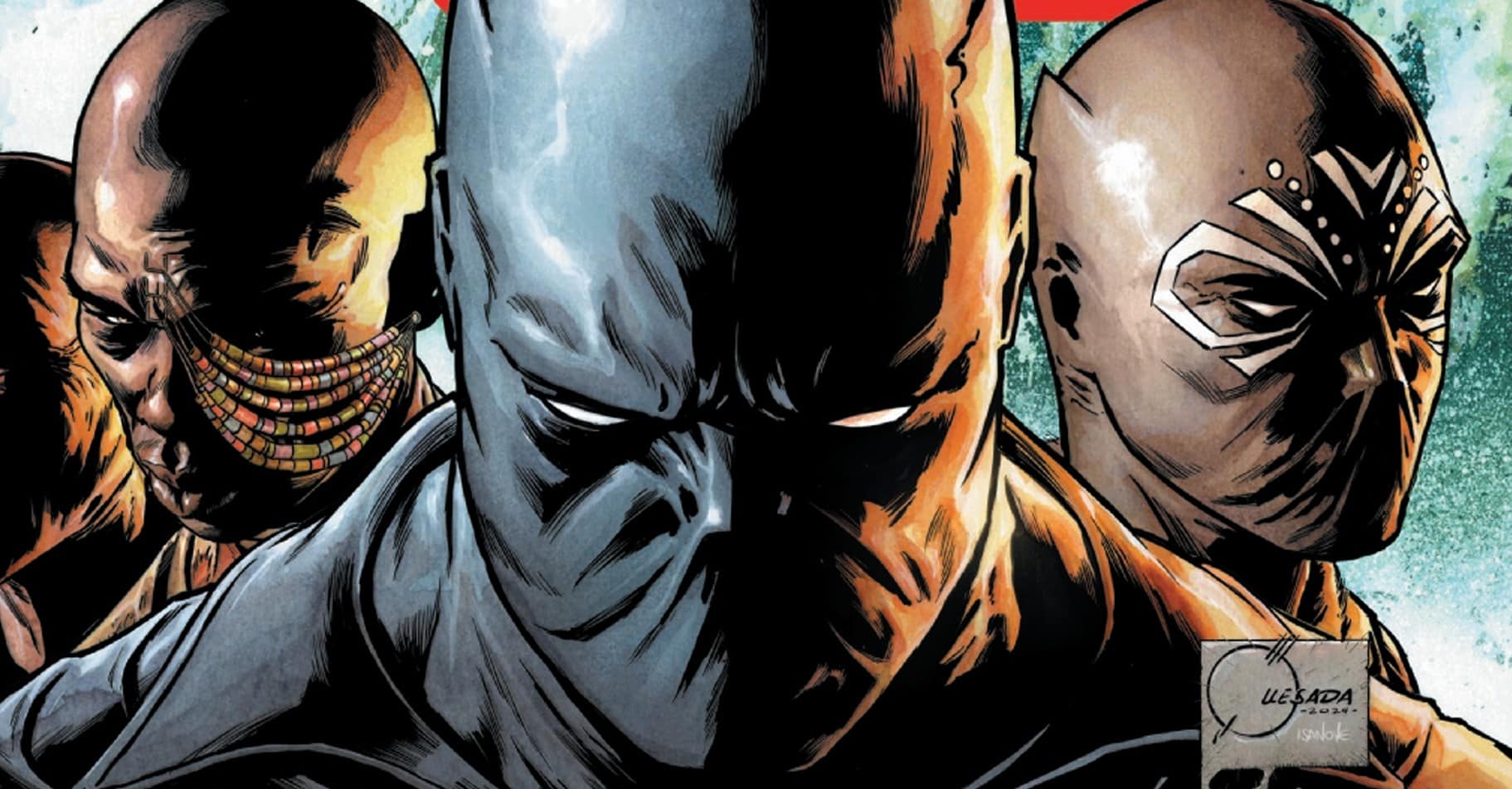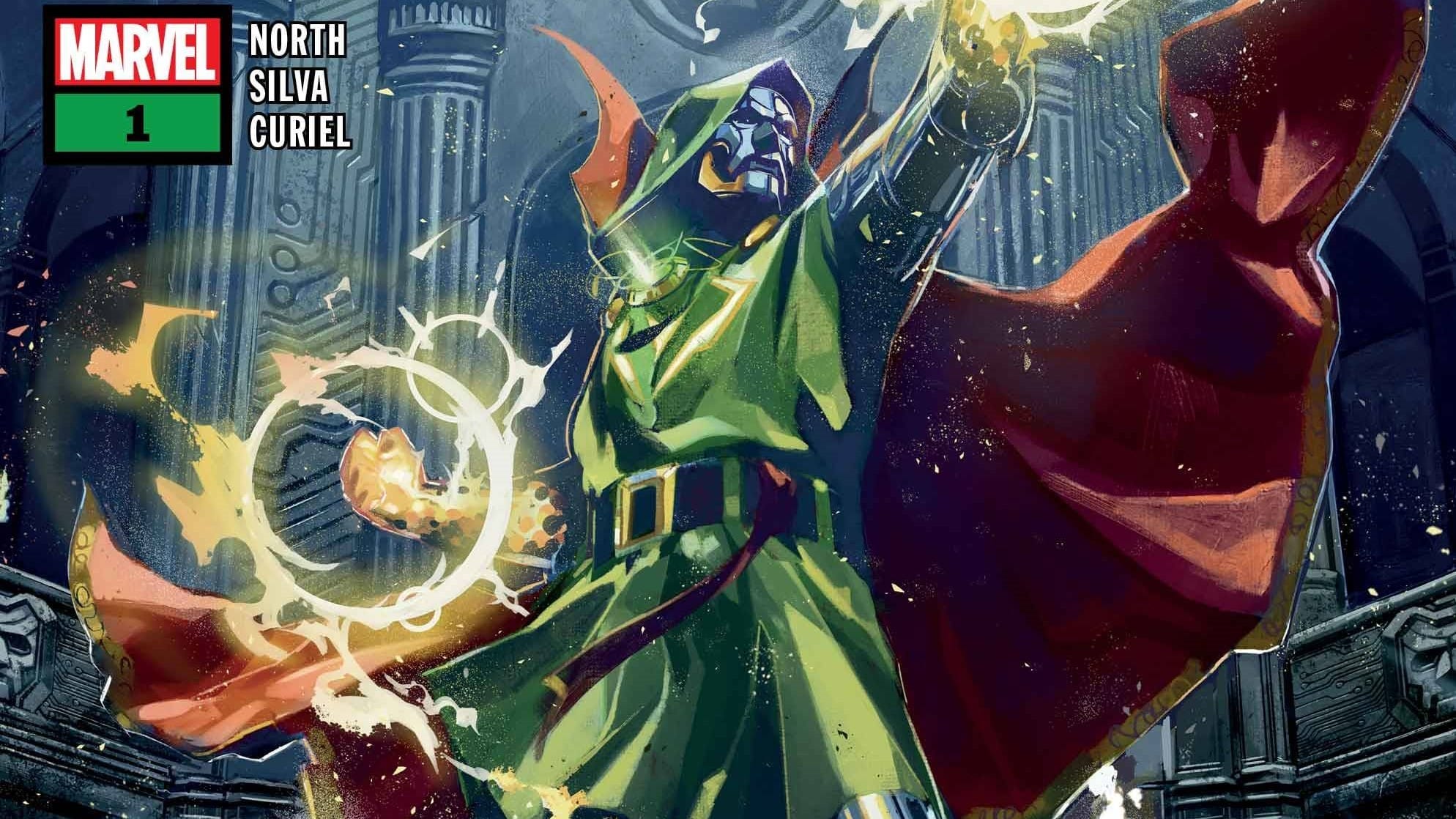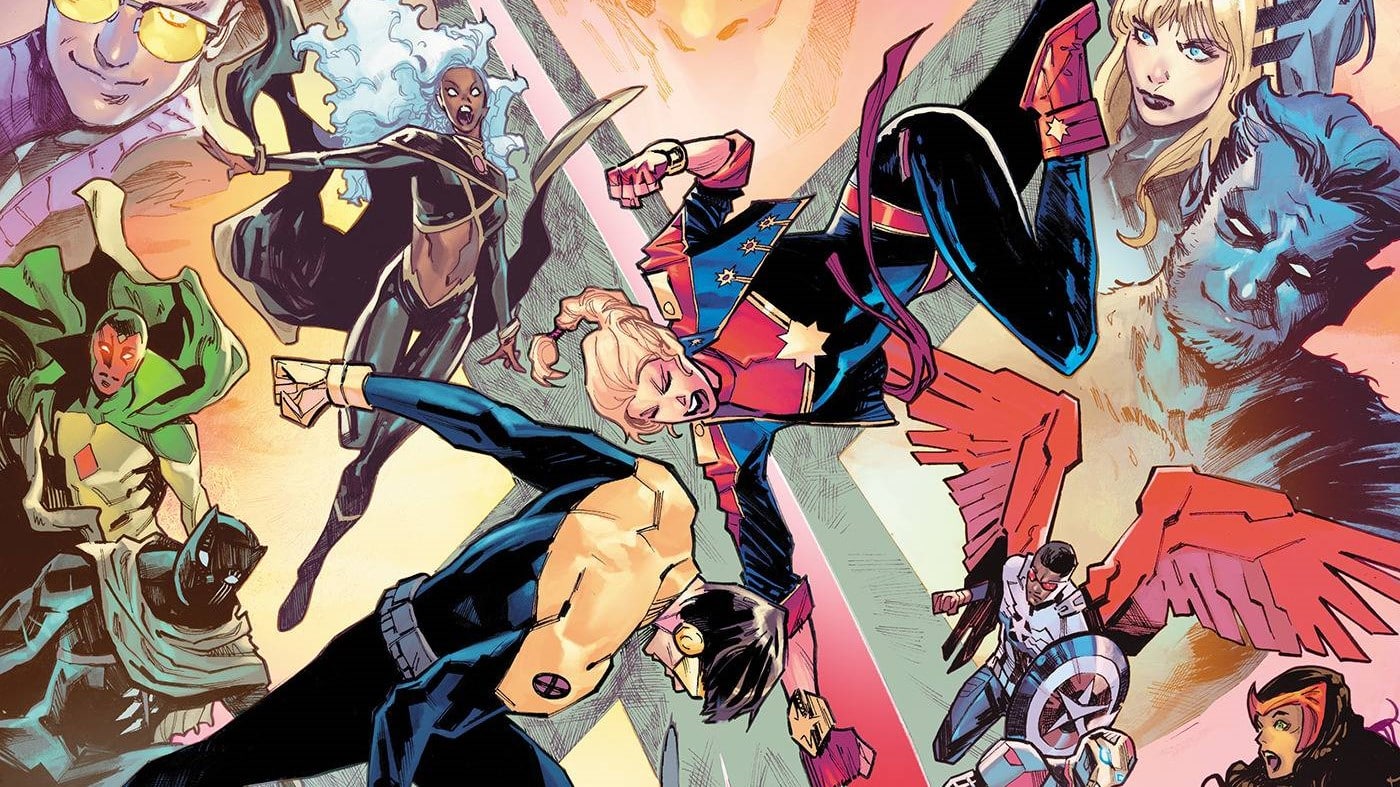It’s the beginning of the end for the Spider-Verse in Spider-Man #1 from Dan Slott, Mark Bagley, John Dell, Edgar Delgado, and Joe Caramagna!
After a year where the Spider-Man line at Marvel finally started making strides forward, it’s impossible to look at Spider-Man #1 without thinking “what on Earth are they thinking?”
Okay, sure, there’s another Spider-Verse movie coming in the next twelve months. The trade for this story arc should be out by the time its released. But Slott and Bagley’s much celebrated “return” to the Spider-Man line (neither really ever left) feels like a hot air balloon- large, impossible to miss and full of heated gas and not much else.
This story more or less hits all the same beats as the original Spider-Verse. There’s been months of build up in other titles until “Prime” Peter Parker enters the story. His normal busting crooks routine is interrupted by a multiversal threat, and then the other Spider heroes show up to save the day.
The issue isn’t the quality of the story. It’s perfectly serviceable middle-of-the-road, blockbuster event comics (at least as far as the plot and dialogue). The issue here is that it’s a story so full of cliche and trope that it’s hard to see any true positives. Some of them are Slott’s personal pet peeves- a full page diversion into Spiderman versus Spider-Man for example- that are eye-rolling and pull the reader out of the story. Those are easy to move forward from, but are distracting.
Others are annoying yet harmless cliches that really can’t be judged as more than that in this issue. This time Morlun is on our side. There was no foreshadowing of this in the Edge of Spider-Verse tie-in that also wraps up today. It’s a face turn that adds something to the story but is done often in these types of stories. Hell, that’s the reason the term face turn exists. The second is another old cliche- the heel turn- as five different Spider-heroes show up changed into wasp-monsters. On their own, these could have been using a trope to the advantage of the story, but using them back to back just emphasizes the trope instead of leaning into it.
Unfortunately there are some actively harmful tropes used here as well.In these 30-ish pages four major female Spider-Heroes are essentially fridged. Jessica Drew isn’t in the issue for more than three pages before she’s stabbed by a infested Spider-Man Noir with a magic dagger and erased from existence. This is more egregious than the others (which I’ll get to in a minute), because this magic dagger wasn’t foreshadowed in the lead-up mini or in the issue at all prior. Just suddenly, there’s a magic reality eraser and Jessica Drew is the victim.
Taking one of the two most prominent female characters in the story (the other being Silk) and immediately killing her to motivate the other characters cheapens the story. The same macguffin could have been introduced differently, and equally effectively without using the trope. There might have have even been a way to still use the trope, but making it more effective- largely by giving Jessica agency in the story. She’s a former SHIELD and Hydra agent- a two page fight scene with Spider-Wasp Noir before her stabbing could have accomplished the same story purposes while giving Jessica that much-needed agency in the story.
Meanwhile, Spider-Girl, Spiderling and Ghost-Spider/Spider-Woman/Spider-Gwen have all been transformed into killer wasp-monsters, with seemingly no trace of their former selves left. Edge of Spider-Verse explicitly stated that regular Spider-Wasps are parasitic and kill their hosts from the inside out (which a quick Google search can verify). The implication with their transformations are clear- the heroes have been “killed” and replaced by these parasitic creatures.
Now, from Edge of Spider-Verse we know that these characters at least were involved in the conflict leading up to their infection/transformation. The agency is there. However, these three all have close relationships with Peter. Two are his daughters, one is his lost love, AU versions or not. The relationships established with them means that using this trope creates a tightrope to walk after we’ve already seen Slott stumble in this issue.
To be fair, yes, I’m certain there’s a cure/antidote/counter-spell for all four of these. They’ll all be back to normal by the end of the crossover more than likely. It’s the first issue after all, and there’s at least another three to five issues in the story after this. That doesn’t make the change any less egregious, it just makes it more cliche. A harmful trope is still a harmful trope, even in cases of the frequently invoked “there’s more to this story!”
The issue isn’t all bad though. Except for maybe one page, this is the best Bagley’s pencils have looked in a long time. There’s a level of detail on the pages that Bagley doesn’t always use, and he pushes himself in the POV in his panels to create a very engaging and modern feel. Dell and Delgado both are great collaborators for him, and years of working together as a team means the three know how to really make a story sing. The action is clear and dynamic, and Bagley and Dell make the characters expressive and relatable. Delgado is able to add a lot of depth with his colors, without pushing too far into a color style that takes away from Bagley’s pencils. The art alone is almost good enough to recommend picking up the issue just to see it.
In the end though, this is an issue that doesn’t set itself apart as a must-read. Slott and editor Nick Lowe have claimed that this is a story they’ve wanted to tell for years, but it feels much more like the company wanted something new branded with “Spider-Verse” before next year’s movie. Maybe they should have taken more time to be more thoughtful in the execution.
Tony Thornley is a geek dad, blogger, Spider-Man and Superman aficionado, X-Men guru, autism daddy, amateur novelist and all around awesome guy. He’s also very humble. Follow him @brawl2099.bsky.social.






